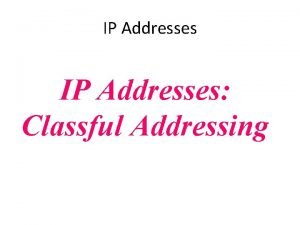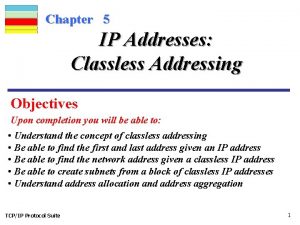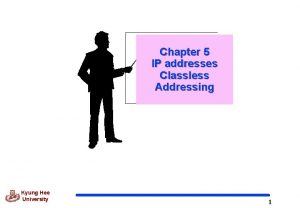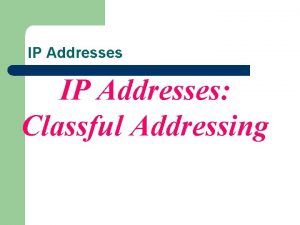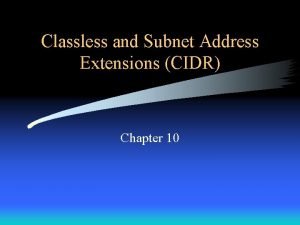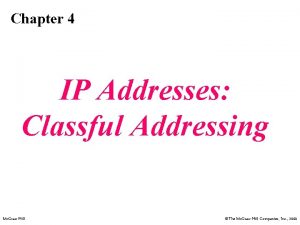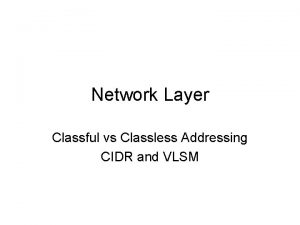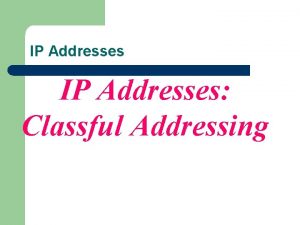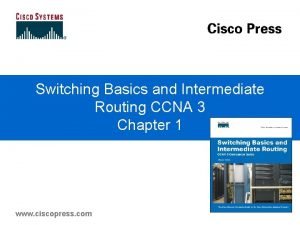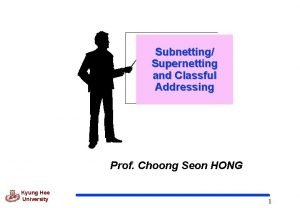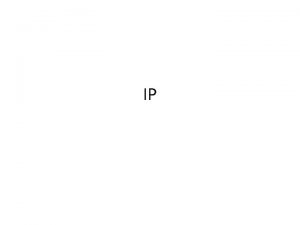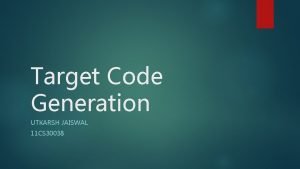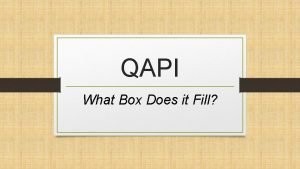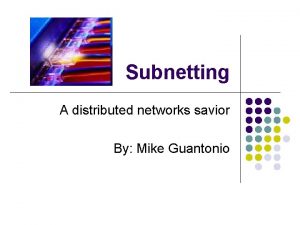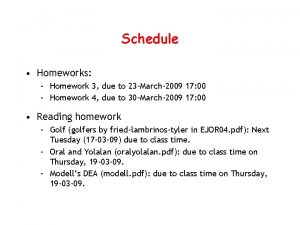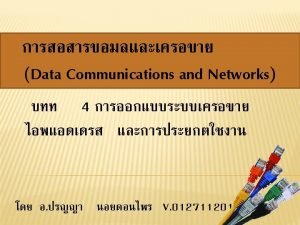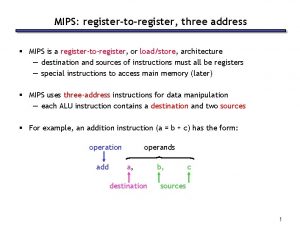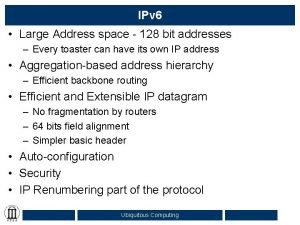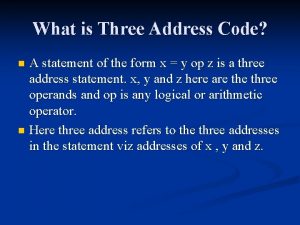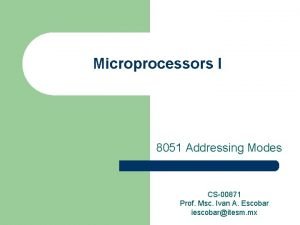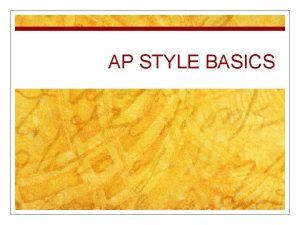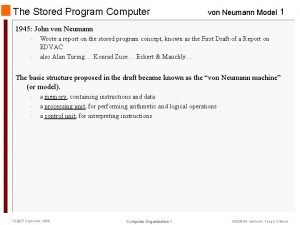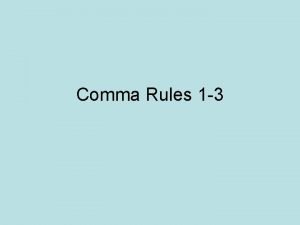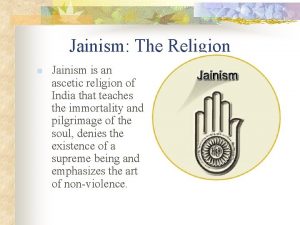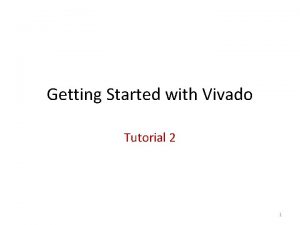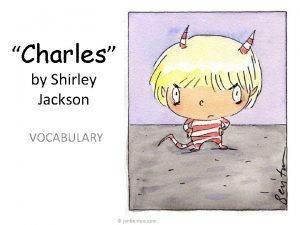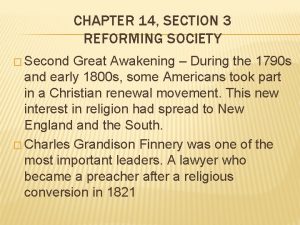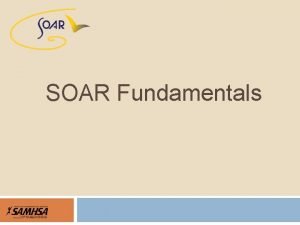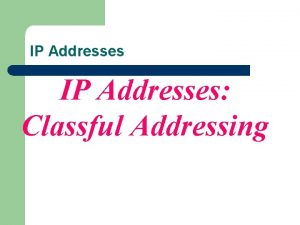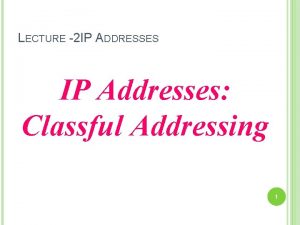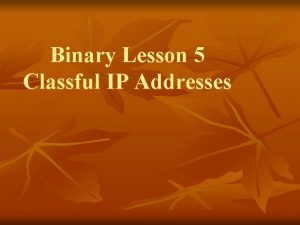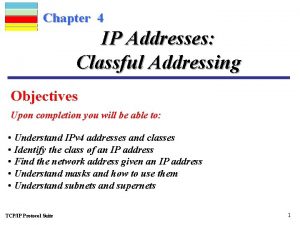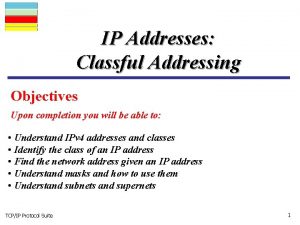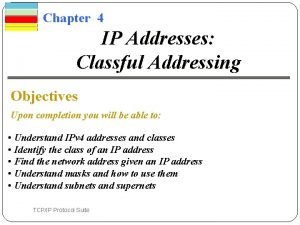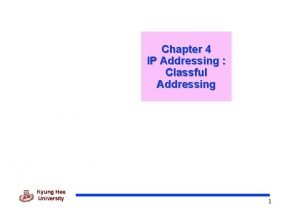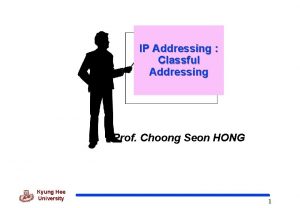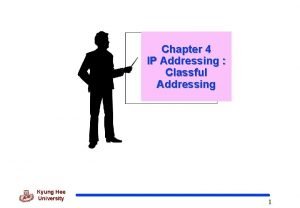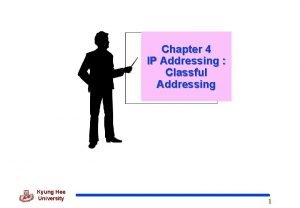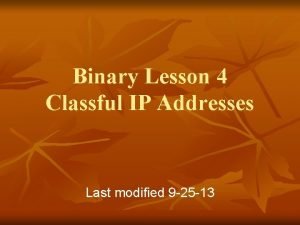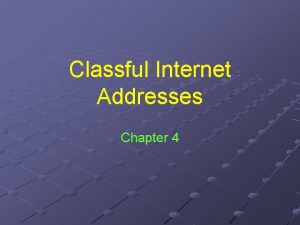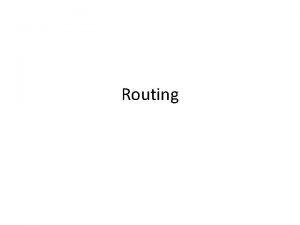4 2 CLASSFUL ADDRESSING IP addresses when started

































- Slides: 33


4. 2 CLASSFUL ADDRESSING IP addresses, when started a few decades ago, used the concept of classes. This architecture is called classful addressing. In the mid-1990 s, a new architecture, called classless addressing, was introduced and will eventually supersede the original architecture. However, part of the Internet is still using classful addressing, but the migration is very fast. The topics discussed in this section include: Recognizing Classes Netid and Hostid Classes and Blocks Network Addresses Sufficient Information Mask CIDR Notation Address Depletion TCP/IP Protocol Suite 2

Figure 4. 2 Occupation of the address space TCP/IP Protocol Suite 3

Table 4. 1 Addresses per class TCP/IP Protocol Suite 4

Figure 4. 3 Finding the class in binary notation TCP/IP Protocol Suite 5

Figure 4. 4 Finding the address class TCP/IP Protocol Suite 6

Example 5 How can we prove that we have 2, 147, 483, 648 addresses in class A? Solution In class A, only 1 bit defines the class. The remaining 31 bits are available for the address. With 31 bits, we can have 231 or 2, 147, 483, 648 addresses. TCP/IP Protocol Suite 7

Example 6 Find the class of each address: a. 00000001011 11101111 b. 110000011 00011011 1111 c. 10100111 11011011 10001011 01101111 d. 11110011011 11111011 00001111 Solution See the procedure in Figure 4. 4. a. The first bit is 0. This is a class A address. b. The first 2 bits are 1; the third bit is 0. This is a class C address. c. The first bit is 1; the second bit is 0. This is a class B address. d. The first 4 bits are 1 s. This is a class E address. . TCP/IP Protocol Suite 8

Figure 4. 5 Finding the class in decimal notation TCP/IP Protocol Suite 9

Example 7 Find the class of each address: Solution a. The first byte is 227 (between 224 and 239); the class is D. b. The first byte is 193 (between 192 and 223); the class is C. c. The first byte is 14 (between 0 and 127); the class is A. d. The first byte is 252 (between 240 and 255); the class is E. e. The first byte is 134 (between 128 and 191); the class is B. TCP/IP Protocol Suite 10

Example 8 In Example 5 we showed that class A has 231 (2, 147, 483, 648) addresses. How can we prove this same fact using dotteddecimal notation? Solution The addresses in class A range from 0. 0 to 127. 255. We need to show that the difference between these two numbers is 2, 147, 483, 648. This is a good exercise because it shows us how to define the range of addresses between two addresses. We notice that we are dealing with base 256 numbers here. Each byte in the notation has a weight. The weights are as follows (see Appendix B): See Next Slide TCP/IP Protocol Suite 11

Example 8 (continued) 2563, 2562, 2561, 2560 Now to find the integer value of each number, we multiply each byte by its weight: Last address: 127 × 2563 + 255 × 2562 + 255 × 2561 + 255 × 2560 = 2, 147, 483, 647 First address: = 0 If we subtract the first from the last and add 1 to the result (remember we always add 1 to get the range), we get 2, 147, 483, 648 or 231. TCP/IP Protocol Suite 12

Figure 4. 6 Netid and hostid TCP/IP Protocol Suite 13

Note: Millions of class A addresses are wasted. TCP/IP Protocol Suite 14

Figure 4. 7 Blocks in class A TCP/IP Protocol Suite 15

Figure 4. 8 Blocks in class B TCP/IP Protocol Suite 16

Note: Many class B addresses are wasted. TCP/IP Protocol Suite 17

Figure 4. 9 Blocks in class C TCP/IP Protocol Suite 18

Note: The number of addresses in class C is smaller than the needs of most organizations. TCP/IP Protocol Suite 19

Note: Class D addresses are used for multicasting; there is only one block in this class. TCP/IP Protocol Suite 20

Note: Class E addresses are reserved for future purposes; most of the block is wasted. TCP/IP Protocol Suite 21

Note: In classful addressing, the network address (the first address in the block) is the one that is assigned to the organization. The range of addresses can automatically be inferred from the network address. TCP/IP Protocol Suite 22

Example 9 Given the network address 17. 0. 0. 0, find the class, the block, and the range of the addresses. Solution The class is A because the first byte is between 0 and 127. The block has a netid of 17. The addresses range from 17. 0. 0. 0 to 17. 255. TCP/IP Protocol Suite 23

Example 10 Given the network address 132. 21. 0. 0, find the class, the block, and the range of the addresses. Solution The class is B because the first byte is between 128 and 191. The block has a netid of 132. 21. The addresses range from 132. 21. 0. 0 to 132. 21. 255. TCP/IP Protocol Suite 24

Example 11 Given the network address 220. 34. 76. 0, find the class, the block, and the range of the addresses. Solution The class is C because the first byte is between 192 and 223. The block has a netid of 220. 34. 76. The addresses range from 220. 34. 76. 0 to 220. 34. 76. 255. TCP/IP Protocol Suite 25

Figure 4. 10 Masking concept TCP/IP Protocol Suite 26

Figure 4. 11 AND operation TCP/IP Protocol Suite 27

Table 4. 2 Default masks TCP/IP Protocol Suite 28

Note: The network address is the beginning address of each block. It can be found by applying the default mask to any of the addresses in the block (including itself). It retains the netid of the block and sets the hostid to zero. TCP/IP Protocol Suite 29

Example 12 Given the address 23. 56. 7. 91, find the beginning address (network address). Solution The default mask is 255. 0. 0. 0, which means that only the first byte is preserved and the other 3 bytes are set to 0 s. The network address is 23. 0. 0. 0. TCP/IP Protocol Suite 30

Example 13 Given the address 132. 6. 17. 85, find the beginning address (network address). Solution The default mask is 255. 0. 0, which means that the first 2 bytes are preserved and the other 2 bytes are set to 0 s. The network address is 132. 6. 0. 0. TCP/IP Protocol Suite 31

Example 14 Given the address 201. 180. 56. 5, find the beginning address (network address). Solution The default mask is 255. 0, which means that the first 3 bytes are preserved and the last byte is set to 0. The network address is 201. 180. 56. 0. TCP/IP Protocol Suite 32

Note: Note that we must not apply the default mask of one class to an address belonging to another class. TCP/IP Protocol Suite 33
 Classful addressing example
Classful addressing example Classless and classful
Classless and classful Classful and classless addressing
Classful and classless addressing What is classful addressing?
What is classful addressing? Classful addressing table
Classful addressing table Classless subnetting
Classless subnetting Classful addressing example
Classful addressing example Flat addressing vs hierarchical addressing
Flat addressing vs hierarchical addressing Classful vs classless
Classful vs classless Classful subnetting
Classful subnetting Classless and classful
Classless and classful Classful subnetting
Classful subnetting Classful subnetting
Classful subnetting Ip classless
Ip classless Addresses in target code
Addresses in target code Blank qapi forms
Blank qapi forms Are we running out of ip addresses
Are we running out of ip addresses (acv-s03) homework - addresses and references
(acv-s03) homework - addresses and references Tasrw
Tasrw Mips instruction format
Mips instruction format Official letter with three addresses
Official letter with three addresses 128 bit address
128 bit address What is three address code
What is three address code I8051
I8051 Ap style basics
Ap style basics Modello von neumann
Modello von neumann Who comma
Who comma Main beliefs of jainism
Main beliefs of jainism Khalid al dossary
Khalid al dossary Getting started with vivado
Getting started with vivado The day my son laurie started kindergarten
The day my son laurie started kindergarten Started an all-female academy in hartford, connecticut.
Started an all-female academy in hartford, connecticut. How to get started with soar?
How to get started with soar? When labour day started
When labour day started
